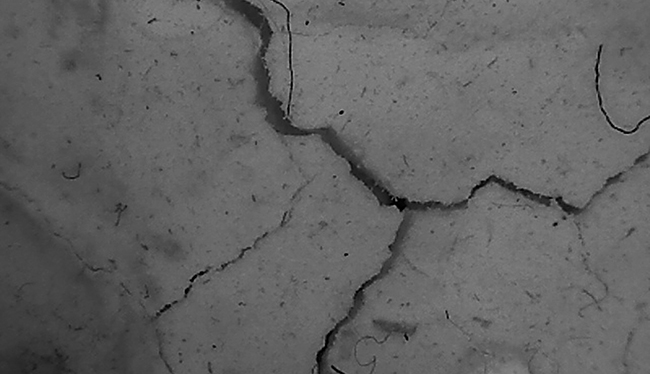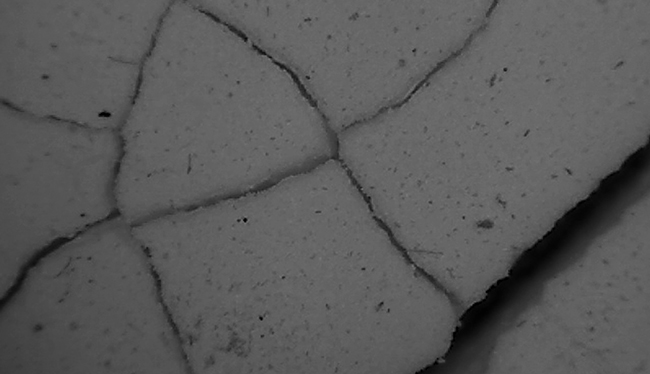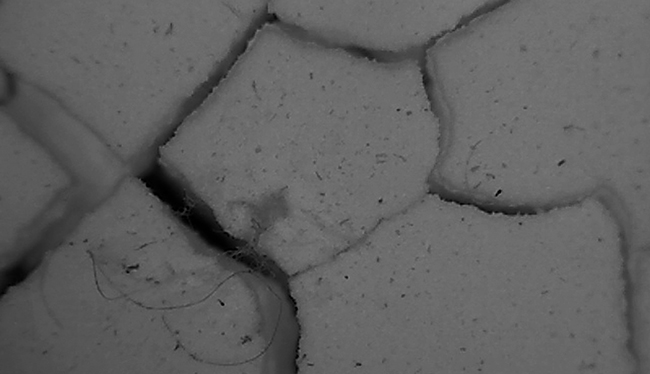Issue 14 |
|
The material drifts more viscous as the temperature lowers. Soon it will stop moving completely. Frozen. Fixed right there and then in the movement that never occurred. The substance cramped, feels numb. Paralyzed by a sudden attack from nowhere. Immovable, without obstacle in sight, it might have experienced anger or desperation. Because something seems to be going on. The material starts to shiver as if being confronted by a cold winter night. A sound, which could at first be mistaken for a child shattering its teeth, is registered. But as the volume increases, the human behavior diminishes. No longer can the sound be related with an innocent defense mechanism. It seems alienated. And just as it was possible to touch the unknown sound wave, it was quickly blown away. Instead new sounds were noticeable. All of them were built up by the same structure. The intense noise was spread out in all latitudes. Surprisingly, though it is stable, the mass seemed to grow. In perfect syncronization the dominant sound and the motionless material expanded. At the same moment as the material transformed from liquid to a solid state, the mass burst. Million of years later. A Greek mathematician, today known as “The Father of Geometry”, finally gave the answer of how a five cornered shape can be drawn. If you faithfully follow the answer detailed in the manual, consisting of nine steps, anyone can make the same figure with a ruler and a compass. The result shows that point A, E, G, H, F creates, what the Greek has himself chosen to name, a pentagon. Just as accurately made polygons can be seen in the shattered material. The design of the shapes and its perfectionism makes us believe they are mechanically produced. But no mechanics, human, or even a tool was involved in the process. For a lot of people this site is a miracle, and for others a big question mark. Regardless the approach, these are tens of thousands of polygon mysteries. Our ignorance allowed us to create myths that we told for such a long time that they became the truth. When the lies were later exposed we started to laugh at them. “How could we have been so stupid?” But when no new explanations were introduced, the laughter changed, and you could sense a nervousness. The delight mixed with terror caused useless speculations. Drowned polygons mirrored restrained visitors. Earlier theories got more difficult to ignore. Patiently the waves have polished the stones. Now, with a pattern of definitive forms, misconceptions seem to be expelled. However, the repeated forms never went contradictively. The coherent expression led to unexpected consequences. Our thoughts act just as randomly, still systematically, as the cracks behaved. Associations chase off from each corner of the polygons. Some of them desperately jumps to the closest edge, where other aim too high or just too far away, and finally disappear. Experience tells us that, finding truths somewhere in between has never succeeded. The desperately, cowardly ones. The ones who barely didn't want to leave at all have continued moving from edge to edge, exploring corner after corner. Angularly circulating the polygons, just like the blind man's cane. Maybe those who have been released from the capacity of seeing will be our guides. They won't be misled by its visual appearance. A perilous pentagon. A heavy hexagon. A obscure octagon.
|
|
       |
|
|
